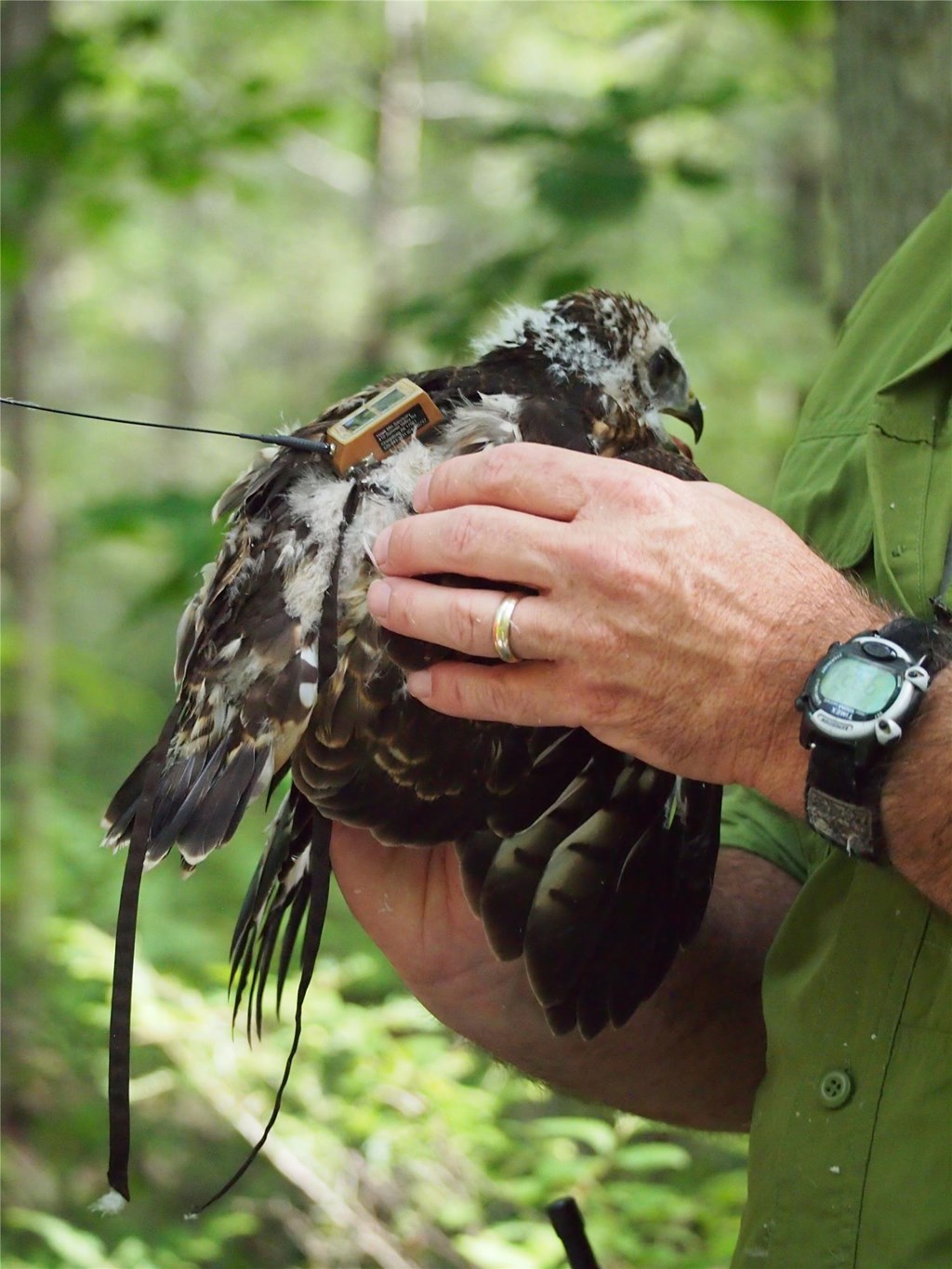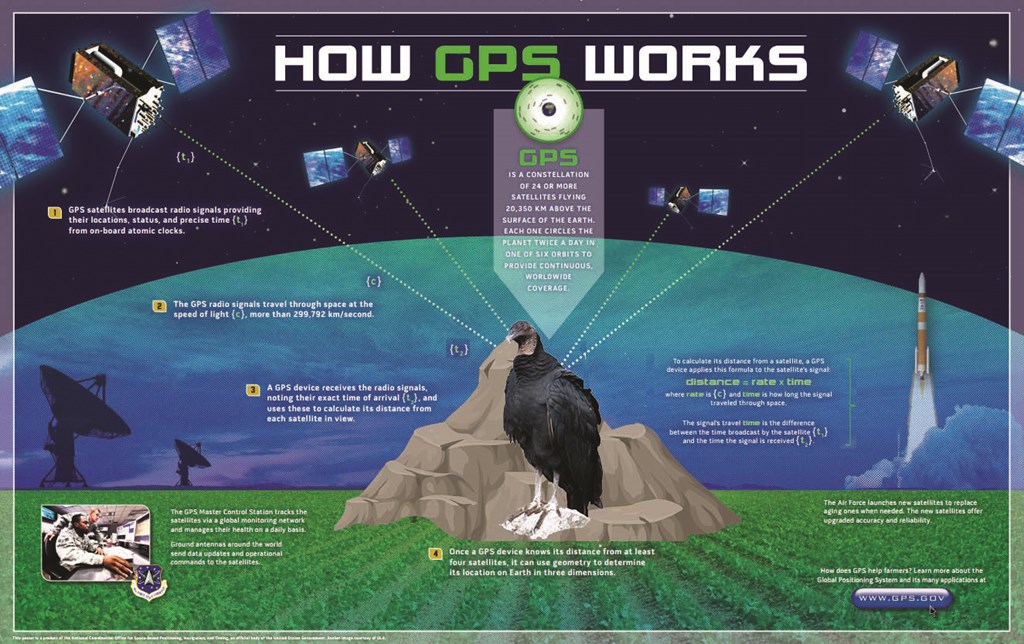Why satellite tracking?

If we want to help conserve raptors, we need to know as much as possible about them and understand their complete life cycle. Raptors are often rare and move long distances during their life cycle, and in order to learn more, we use tracking devices. This technology allows raptor biologists to follow or “track” the movements of birds, and therefore answer important questions about their life histories, movement ecology, annual cycles, and conservation threats. We call this method of research telemetry, which means “distance measuring,” in Greek.
There are several devices that can be used to track a bird. Hawk Mountain uses GPS (Global Positioning System) units to tag black vultures. These units weigh 30 grams (12 pennies) and are placed upon the vulture’s back with a “backpack” made of teflon ribbon. This process does not harm the vulture or prevent it from completing necessary tasks such as feeding, breeding, or soaring.
These units send signals throughout the day, which are then picked up by satellites that calculate the vulture’s location. Depending on whether the bird is wearing a GPS unit and a GSM (Global System for Mobile Communications) or only a GPS unit, the location will be sent via cell phone network (GSM) or through the unit’s manufacturer (GPS) directly to the awaiting scientist’s email.
The black vultures that have been tagged by Sanctuary scientists are wearing a mix of GSM and GPS units. All contain batteries that are re-charged by solar panels, which provide enough power for long-term data collection. Without solar panels, the unit’s batteries would last only about three years at the most, limiting the types of questions that scientists could answer.
Hawk Mountain scientists are currently involved in tracking broad-winged hawks, snowy owls, black vultures, turkey vultures, and collaborating to track hooded vultures, cinerous vultures, lappet-faced vultures, white-backed vultures, rough-legged hawks, and peregrine falcons.
Why it Matters
By gathering information on the movement ecology of raptors, scientists and local communities can better understand how to protect them. With more knowledge about where raptors are going and why, we can understand what habitats they rely on, where they are foraging or migrating, what threats they face, and how we can do a better job of conserving them.

To support any of our tracking research initiatives, please contact Director of Conservation Science, Dr. Laurie Goodrich, at 570-943-3411 ext 106 or [email protected].